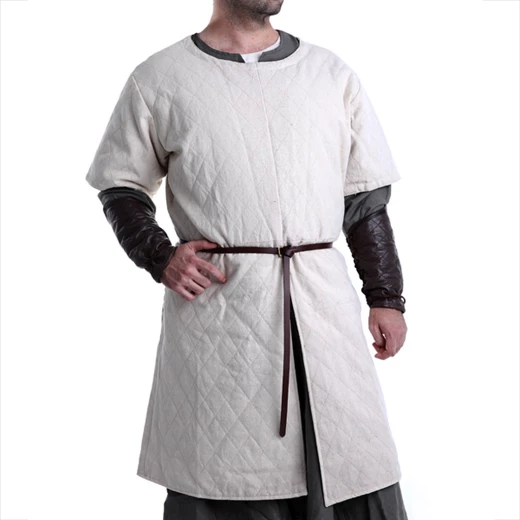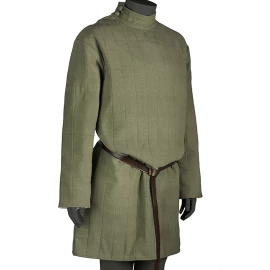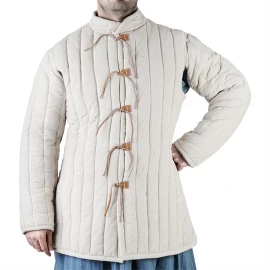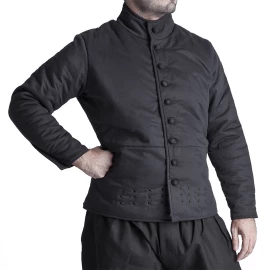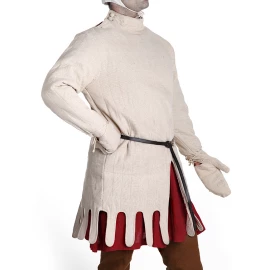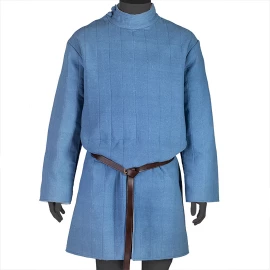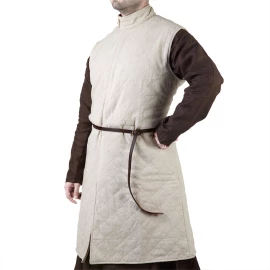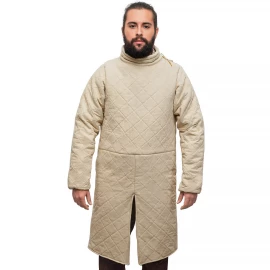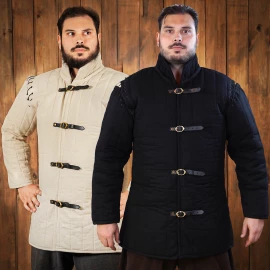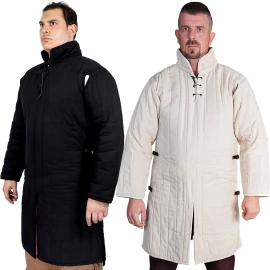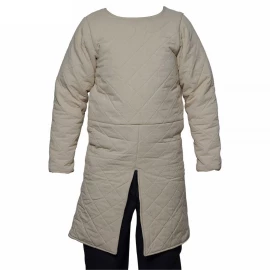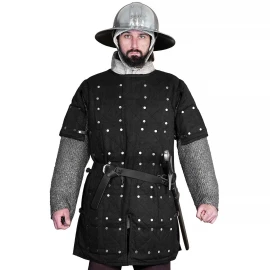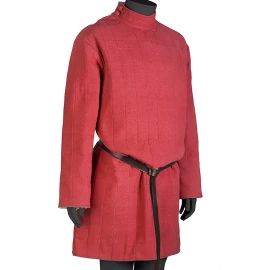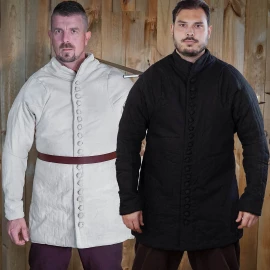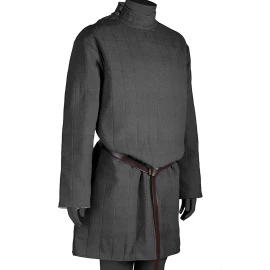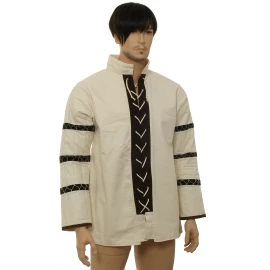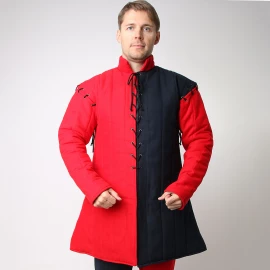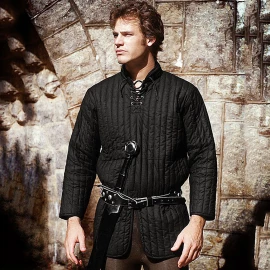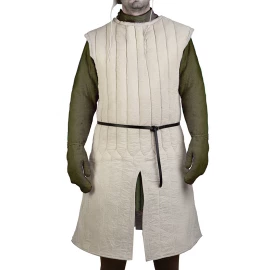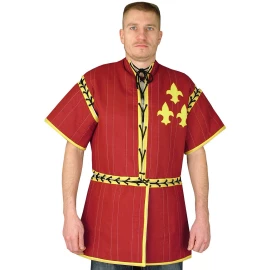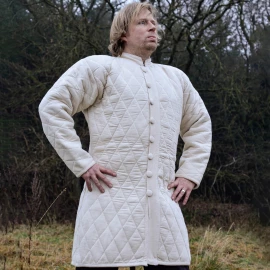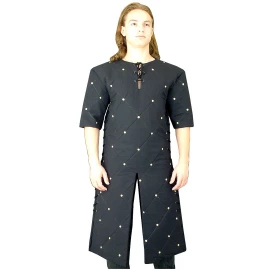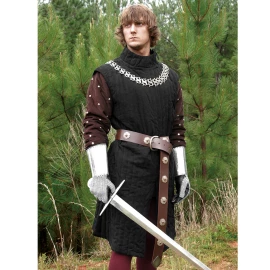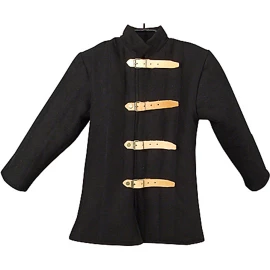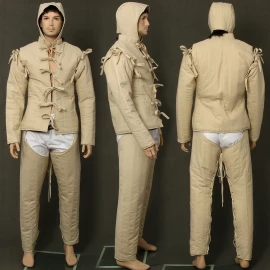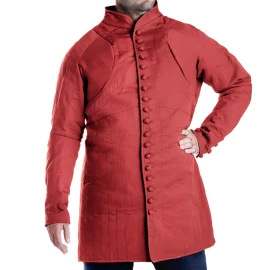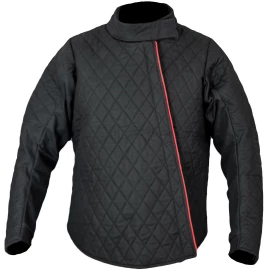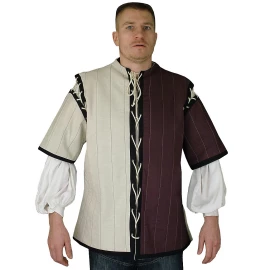Padded jack, short-sleeved
6xA padded jackis a padded defensive jacket, worn as armour separately, or combined with mail or plate armour. Gambeson were produced with a sewing technique called quilting. Usually constructed of linen or wool, the stuffing varied, and could be for example scrap cloth or horse hair. During the 14th century, illustrations usually show buttons or laces up the front. More information...
Padded jack, short-sleeved
Specifications:
- Made of cotton canvas
- Slightly padded
- The quilted fabric is about 6mm thick.
- Delivery without leather belt or/and any other garments
The given sizes of the padded jacks correspond to the following data:
| S | M | L | XL | |
| Length from the shoulder seam at the neck | 106cm | 107cm | 108cm | 110cm |
| Max. circumference of the bust | 114cm | 118cm | 124cm | 130cm |
A padded jack worn under armour, particularly plate armour of fifteenth and sixteenth century Europe contains arming points for attaching plates and fifteenth century examples may include goussets sewn into the elbows and armpits to protect the wearer in locations not covered by plate. German gothic armour arming doublets were generally shorter than Italian white armour doublets, which could extend to the upper thigh. In late fifteenth century Italy this also became a civilian fashion. Men who were not knights wore arming doublets, probably because the garment suggested status and chivalry.
- Both the outer cloth, the lining and inner padding is made of 100% cotton.
How to wash the padded jack
You can wash the jack in a washing machine in cold water to avoid possible change of its size. The resistant stains (e.g. oil) won't disappear but the gambeson gets clean and nice-smelling anyway.
You can also wash it by hand in cold water with a more sensitive care. By this method you can use a soft brush for possible resistant stains.
We are here for you


